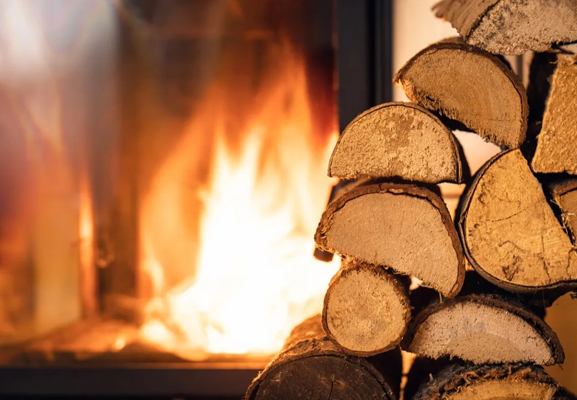
When it gets cold outside, there’s nothing better than cozying up to a warm indoor fire. The type of wood you use in your fireplace can determine how well it burns and how much heat it produces. At Master Fireplaces, we understand that selecting the right type of wood can mean the difference between lots of heat output and a long burn time as well as ease of maintenance of your wood fireplace. So, what is the best wood for an indoor fireplace?
Hardwood vs Softwood
Firewood is generally categorized into two groups – hardwood and softwood. While both types will keep you warm during winter nights, hardwoods such as oak, maple, or birch are denser (heavier) than their counterparts like pine or spruce which means they burn longer while producing more heat making them perfect for indoor fires.
On the other hand, softwoods tend to be less dense so they burn faster; this makes them great for starting fires but not so much when it comes to keeping them going.
Best Choices for Indoor Fireplaces
- Oak: Being one of the most common firewoods used worldwide due to its ability to produce high levels of heat output over a long period. Oak should be considered if you want something classic yet effective at warming up your space. It also provides steady warmth because it burns evenly throughout, unlike some other woods, which may give out intermittent bursts of intense warmth followed by periods without any noticeable change in temperature at all.
However, since oaks are dense woods they need time for seasoning, which is usually not below one year although this might seem like too much waiting trust me – once done right everything else falls into place.
- Maple: Maple has always been my favorite because I just love how consistently good its burns are coupled with high heat production levels, especially during those freezing winter months where safety matters most such as not sparking much, hence safe enough to be used indoors.
- Birch: Birch offers bright flames that are perfect for people who like watching fires dance around them; this is because it burns quickly but is still very hot so you can expect a lot of lively crackles accompanied by an intense orange-yellow glow which tends to give off more light than other types of wood. Mixing birch logs with slow-burning woods like oaks creates eye-catching fires that will keep everyone entertained throughout the night.
- Hickory: Hickories are known for their ability to release huge amounts of heat over extended periods once lit, hence considered premium choices by most fireplace enthusiasts worldwide – they also produce minimal amounts of smoke, thus making them ideal for those long-lasting cold winter nights when one needs such kind of firewood.
Wood to Avoid
Green (unseasoned) wood should never find its way into any indoor fireplaces as it produces lots of smoke which could easily lead to creosote build-up within your chimney or flue posing serious risks in terms of safety while softwoods like pines may burn too fast creating additional creosotes.
Conclusion
The type of wood you choose for your indoor fireplace greatly affects how warm and nice it will be inside there. Master Fireplaces recommends using well-seasoned hardwoods due to their superior burning characteristics. So, make sure you stock up on these types if you want a cozy winter home.
